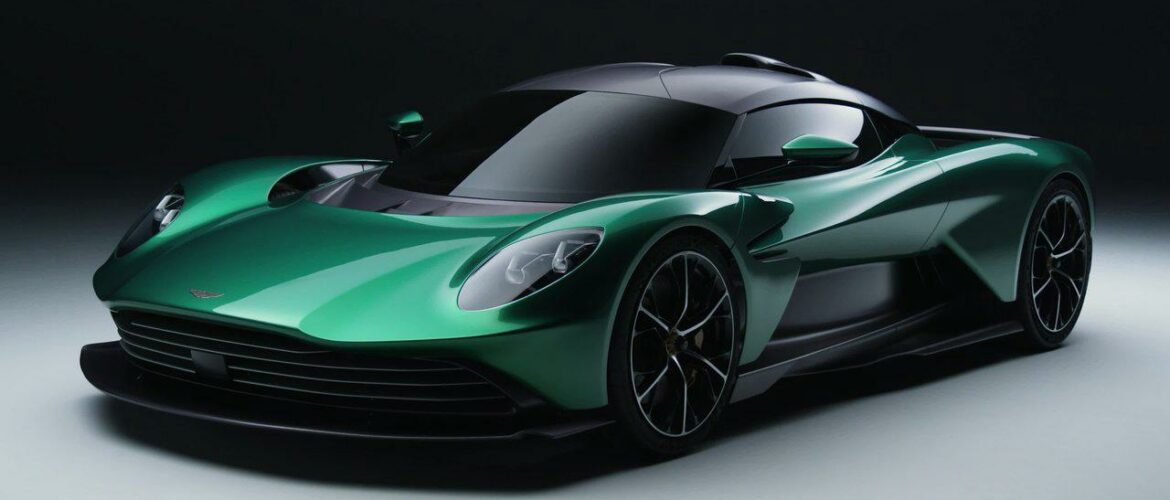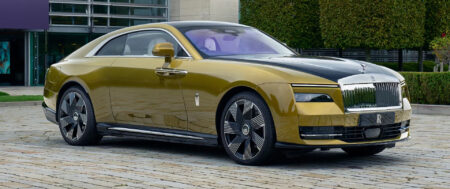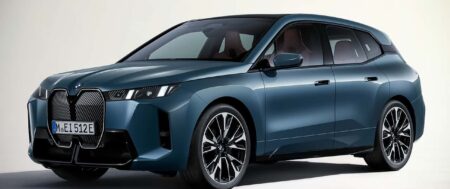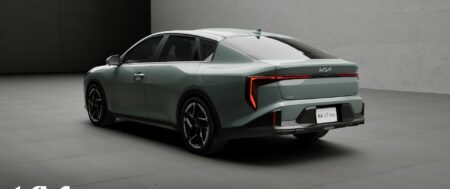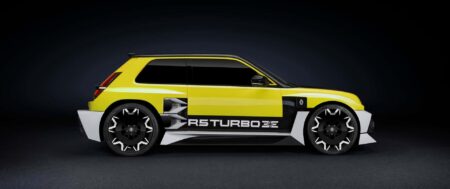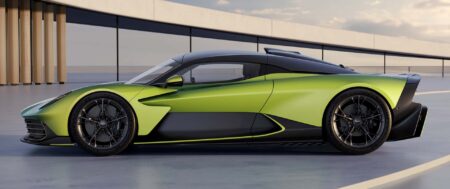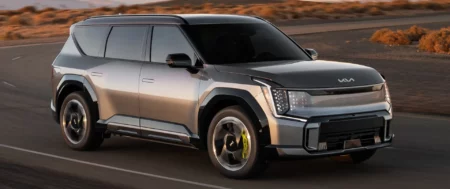Aston Martin Valhalla’s top-spec hypercar donates some DNA to a this, er, more mainstream hypercar.
Hypercars don’t come much more hyper than Aston Martin’s Valkyrie. It was conceived in collaboration with a genius F1 race car designer, has a bespoke naturally aspirated V-12 that makes 1000 horsepower at a screaming 10,500 rpm with a Rimac-engineered electric motor adding another 160 horses, and is priced at a stratospheric $3 million or so. It also serves as the basis for an even wilder AMR Pro version. Next to the Valkyrie, the 2024 Aston Martin Valhalla seems a bit more…er…mainstream. As if you could ever call a car aimed at Ferrari’s SF90 Stradale mainstream.
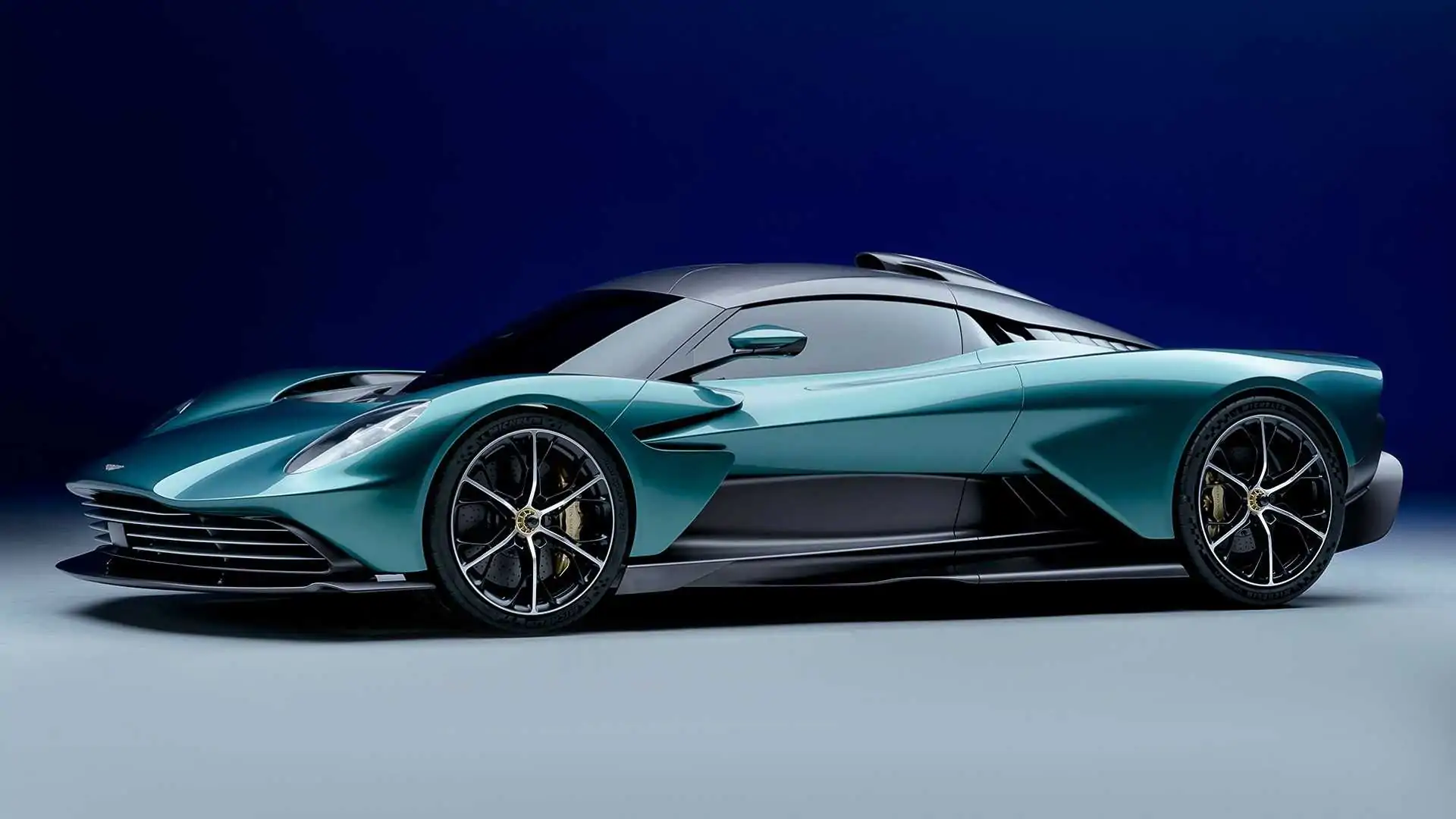
The Valhalla’s all-wheel-drive hybrid powertrain boasts 937 horsepower, powers the car to 60 mph in less than 2.5 seconds, delivers a top speed of 217 mph, and offers as much as nine miles of pure electric mobility at speeds up to 80 mph, all numbers and capabilities that are close to those of Ferrari’s high-tech flagship mid-engine sports car. The Valhalla will be more expensive than the SF90 when it arrives in the U.S. in the second half of 2023, though, with Aston sources suggesting a price of between $800,000 and $900,000.
Hubris? More like confidence in a car that Aston Martin insiders are calling “son of Valkyrie.” They’re also calling it a car that will lap the Nürburgring Nordschleife in less than 6 minutes, 30 seconds—15 seconds quicker than any current production rival.
In truth, the Valhalla is more a close cousin of Valkyrie than a son. The Valhalla’s carbon-fiber tub is different, the aerodynamics are not as extreme, and instead of a naturally aspirated 6.5-liter V-12, the internal combustion component of the powertrain is a twin-turbo 4.0-liter V-8. The Valhalla has similar F1-style pushrod front suspension, Multimatic adaptive spring and shocks all round, and brake-by-wire carbon-ceramic brakes, but none of the parts are interchangeable with the Valkyrie. And though there’s a family resemblance, every exterior panel is different, too.
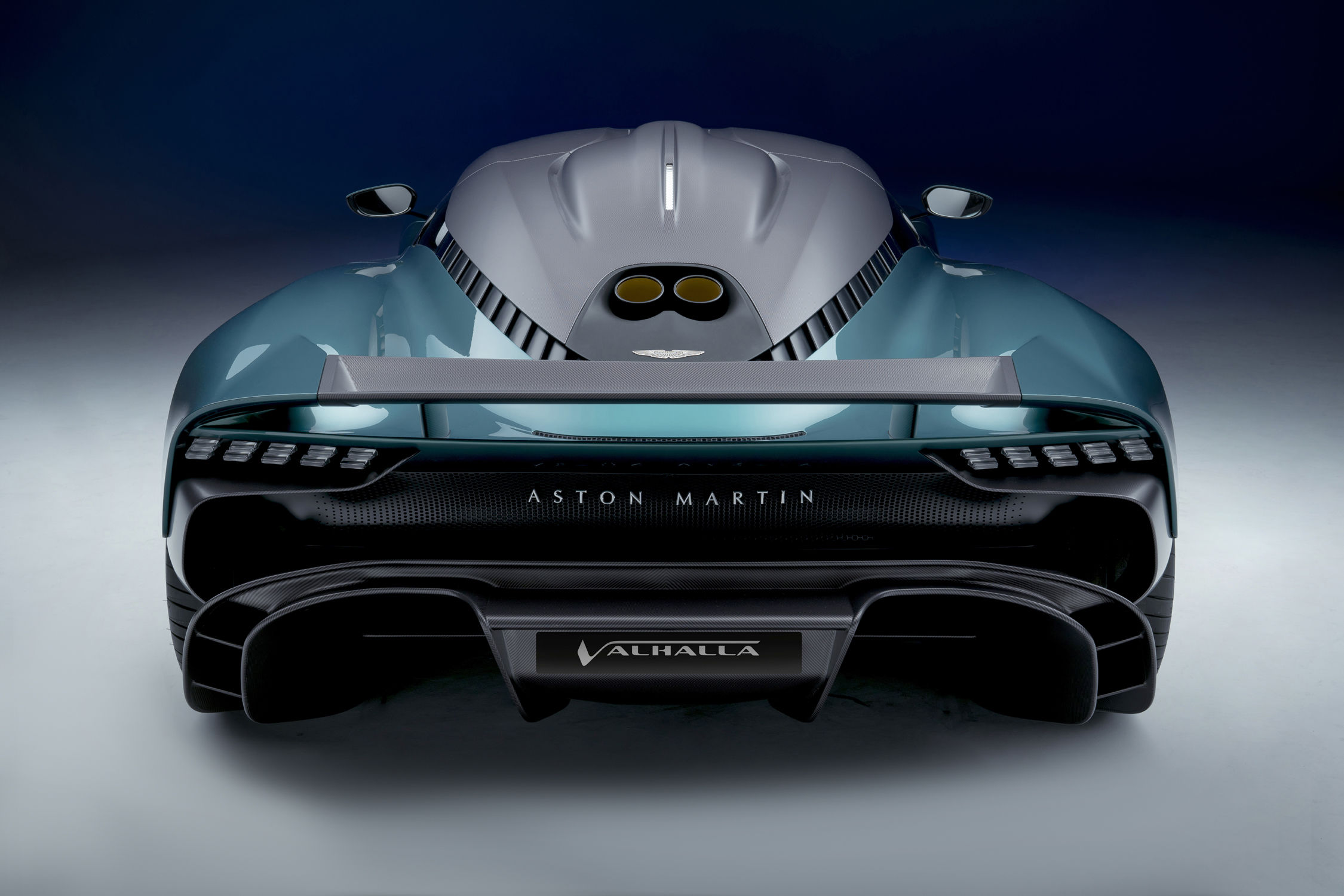
The original internal combustion engine for the Valhalla was to have been an all-new 3.0-liter turbocharged V-6 developed in-house at Aston Martin. But incoming CEO Tobias Moers nixed that idea last year when he discovered the engine was a long way from being ready for production. Though the Aston Martin press kit doesn’t explicitly say, the Valhalla’s 4.0-liter twin-turbo V-8 is based on the M178 LS2 flat-plane crank engine developed under Moers while he was at AMG, for the Mercedes-AMG GT Black Series.
In the GT Black Series, the engine develops 720 horsepower at 6700 rpm. In the Valhalla, its output has been boosted to 740 horsepower at 7200 rpm thanks to a host of unique components that include air-to-air intercoolers and a lightweight top-exit exhaust system. Powering the rear wheels, it is the most advanced, responsive, and highest performing V-8 ever fitted to an Aston Martin, the company says.
The engine is augmented by a 400-volt hybrid drive system comprised of electric motors at the front and rear axles; it develops a total of 201 horses itself, and the total combined system output is rated at 937 horsepower and 738 lb-ft of torque. Only the front axle motor is used to motivate the Valhalla when it’s in EV mode: In other modes, power and torque are split between the axles and varied according to driving demands; under some circumstances, the system will send 100 percent of the motors’ output to the rear axle.
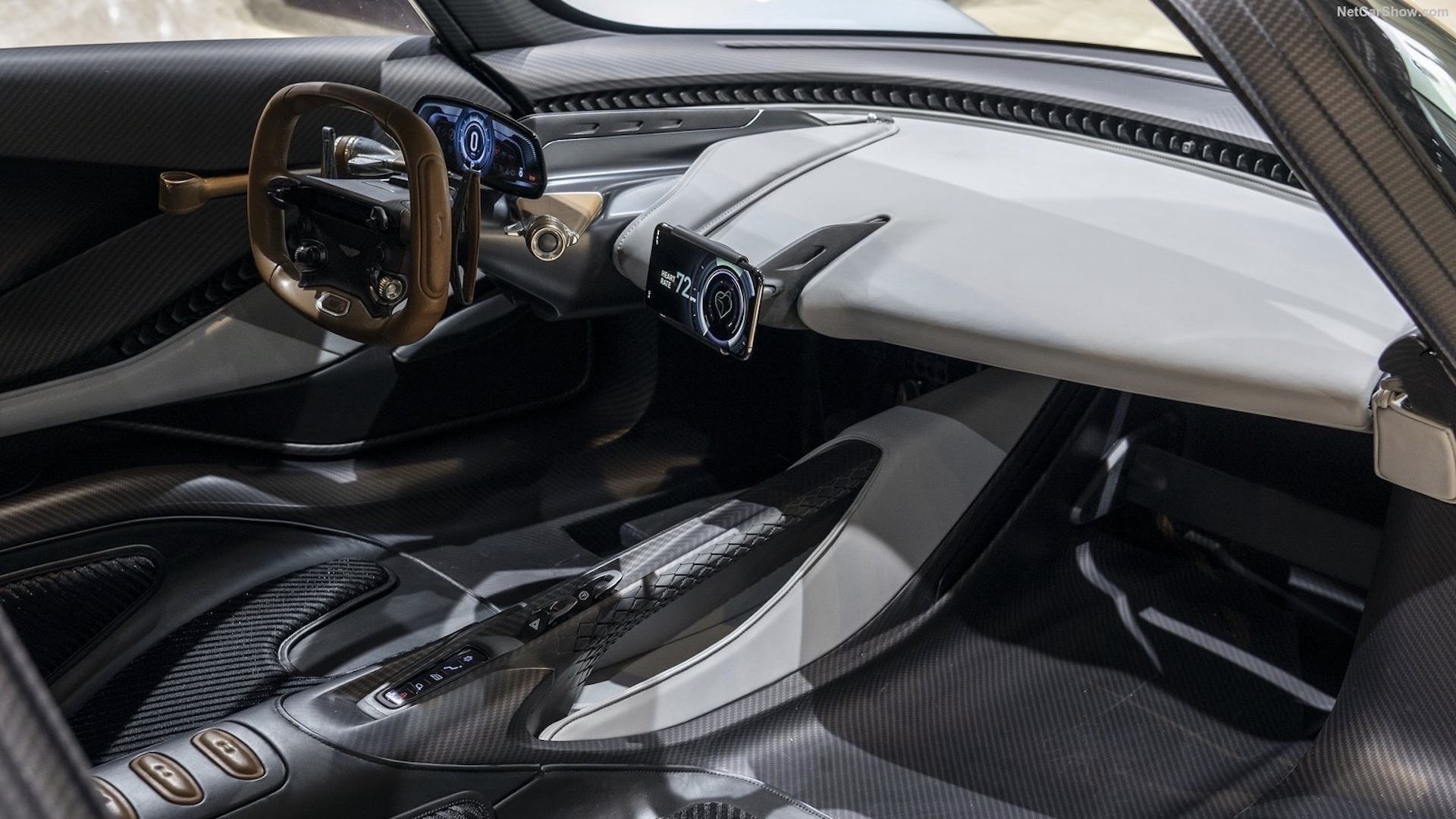
One of the keys to making this complex powertrain work is a new eight-speed dual-clutch transmission that has been exclusively designed and engineered for Aston Martin and will also see duty in the forthcoming mid-engine Vanquish. In the Valhalla it has no reverse gear—the electric motors are also used to move the car backwards—and it has an integrated electronic differential to maximize traction. The trick transmission can also simultaneously run different gears for both the internal combustion engine and electric motors to make the most of the electric drive’s instant-on torque and the internal combustion engine’s top end power.
As you’d expect, the adaptive suspension will stiffen the spring and damper rates and snuggle the Valhalla closer to the road in Track mode. It can also be employed to lift the nose of the car at low speeds to negotiate steep driveways. The steering is by way of an electric power-assisted system, and the wheels measure 20 inches in diameter at the front and 21 inched at the rear, shod with bespoke Michelin tires.
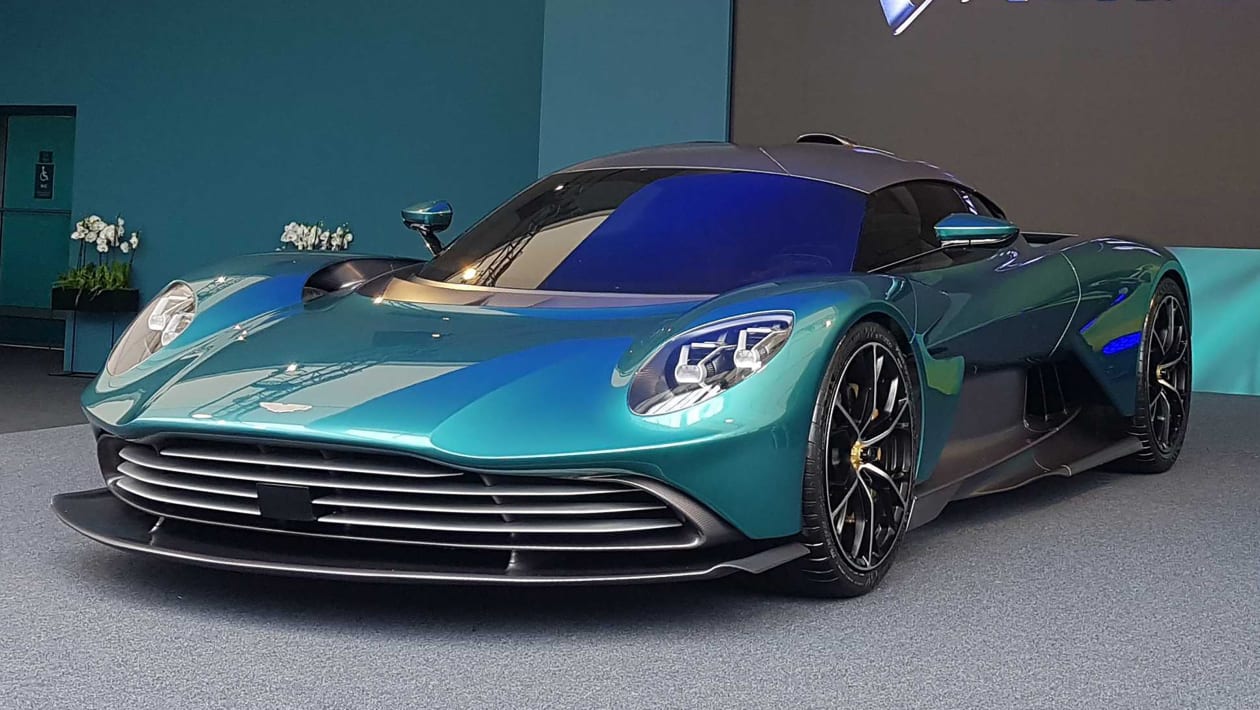
Though nowhere near as extreme as the Valkyrie, the Valhalla is relatively light and lessons learned from the Valkyrie’s radical Adrian Newey-designed aerodynamics mean the Valhalla generates a respectable 1322 pounds of downforce at 150 mph, courtesy of active aerodynamic elements at the front of the car and an active rear wing working in combination with large underbody venturis.
Styling a roadgoing mid-engine sports car is a bit like tailoring a tuxedo—with a fixed format, individuality is necessarily driven by detail. Though the storied British sports car maker has until now never done mid-engine cars, the strong front graphic makes the Valhalla instantly recognizable as an Aston Martin. The trailing edges of the front fenders, which stand proud of the surface of the dihedral doors to vent air from under the front of the car, artfully echo the design of the Valkyrie fenders. There’s a hint of Valkyrie in the greenhouse, too.
Aston Martin describes the Valhalla’s interior as “pared back,” although it’s much roomier than that of the Valkyrie. The seats are fixed to the chassis—the steering wheel and the pedals move instead—and the footwells are raised to give a low hip-to-heel seating position, as in an F1 car. A new Aston Martin user interface system features a central touchscreen display, and both Apple CarPlay and Android Auto connectivity are standard. There’s also dual zone air conditioning, and a suite of driver-assistance systems, including forward collision warning, active cruise control, and blind spot monitoring.
The screaming Valkyrie may have stolen all the headlines so far, but the Valhalla is a much more significant Aston Martin. It’s Aston’s first series production mid-engine sports car—the hand-built Valkyrie is being made in tiny numbers—and it showcases technologies relevant to future mainstream Aston Martin models, such as the PHEV powertrain and that new eight-speed dual-clutch transmission. It’s also a good-looking car, like most recent Astons. But more important, this time those looks may not flatter to deceive. Remember that wickedly quick Nürburgring target lap time.
